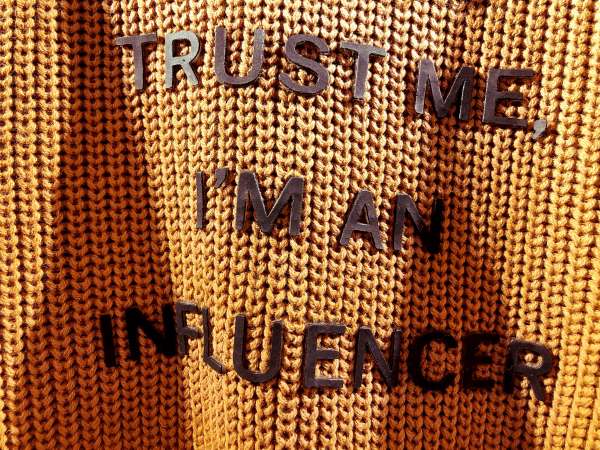Influencer Marketing became popular during the rise of social media in the early 2010s. Nowadays, you can find influencers on YouTube, Instagram, Twitter and many more social media out there. Most notably, influencers are coming with a segmented audience which helps companies narrow down who they want to choose.
One of the most notable influencers for food reviews is Barstool owner David Portnoy who reviews pizzas on a scale from 0-10. His reviews have helped many small pizza businesses since he has a large following. After he gives a high score, that same pizza restaurant will have many people come through with tasting their pizza. He typically works with a team that follows him with a video camera and records his reaction when he bites into a pizza. As a result, a lot of pizza owners will reach out to him for giving their business a review.
Influencer Marketing Categories
Many influencers are grouped based on how many followers they have. The more followers that you have, the more you are selected for brand influence marketing. With that in mind, let go over the 4 types of social media influencers.
| Influencer Type | Number of Followers |
| Mega Influencer | 1 Million+ |
| Macro Influencer | 100,000 – 1 Million |
| Micro Influencer | 1,000 – 100,000 |
| Nano Influencer | Less than 1,000 |
Mega-Influencer
These types of influencers are the highest in the ranking category with more than one million followers. Many of these influencers have a diverse audience. Sometimes these influencers are celebrities or sports figures such as Kylie Jenner, Selena Gomez, Lebron James, and Cristiano Ronaldo. Other than that, you can also find regular people who become mega-influencers with over 1 million subscribers or followers on their social media channels or YouTube. In the latter case, these influencers have to constantly work on creating content to gain a large following such as the Nelk Boys who has posted videos on YouTube for longer than 8 years.
Nonetheless, mega-influencers are some of the most sought out influencers that companies are trying to hire so they can promote their brand. Companies are typically responsible for ensuring that influencers receive their clothes, products, foods and drinks. These things are later on featured on their social medias and YouTube channels as a way to get a nice paycheck for doing some influencer marketing.
Macro-Influencer
Let’s give a huge round of applause to macro-influencers who fall somewhere between 100,000 and one million followers. Most of these influencers have gained a huge following and fame by creating something funny, creative or inspiring on the internet. These types of influencers have a specific and segmented audience which companies can take advantage of if they want to target customers based on their age, gender and income. Unlike mega-influencers, macro type influencers are not celebrities. The consistency of creating content that appeals to their type of audience is what rose them to macro-influencers. Brands like these influencers because they have a personal connection to their followers which results in sales.
Micro-Influencer
These influencers fall anywhere between 1,000 to 100,000 followers on social media. These influencers are probably early risers in the rise of influencer marketing as they slow get their followers up. Other times, these influencers top off between 1,000 to 100,000 followers because they are experts in their niche. These type of influencers are often a lot cheaper compared to macro influencers. They charge a much lower rate to use their brand for influencer marketing. In return, companies have a much higher return on investment. Negotiations for making a deal with these influencers are much more favorable for the brand.
Nano-Influencer
Many of these types of influencers have less than 1,000 followers on their social medias. For the most part, these influencers are largely new to social media or they have a localized following from a small organization or business. With less than 1,000 followers, companies normally don’t engage with conducting negotiations with them since the marketing influence is at a small reach compared to others on this list. The circumstances of working with a nano-influencer is that they are really cheap to work with and their schedule is much more open companies to high ranking influencers.
How to reach Out to Influencers

For businesses, the most common practice is email. Sometimes influencers may respond to DMs but usually fans write to them on DMs so it’s not good practice to use direct messaging on social media. For email, the best way to get a response is to start with a catchy email with your brand name written on the subject line. Next, you want to write how inspirational the content they make in the email message. You want to let them know that their content is great and you would like to collaborate with them on a brand marketing influencer deal. It takes time but the more you practice on creating compelling subject lines and personal email messages then you will see higher open rates and closures.
Why Did Influencer Marketing Become Popular?
The popularity was starting to rise after TV reality shows, MTV and commercials. Michael Jordan was one of the highest paid athletes for influencer marketing for Nike, Gatorade and McDonalds. Everyone was watching the Chicago Bulls because Michael was a popular sports figure that defied the odds to score at all cost. His energy and charisma was likeable worldwide through NBA and Olympic sports. More people wanted to be like Mike so they bought Nikes and Gatorade just for what they see when he was on commercials.
With social media, everyone got a platform to create content and share it with the world. Nowadays, you have more influencers since 1990s and the accessibility of influencer lifestyle is easier as they share their life and content on social media. Influencer marketing is popular today because it promotes brands like Michael Jordan did back in the 1990s. The sales and brand awareness is instantaneous. Therefore, it’s really profitable to go after the biggest influencers who have a large following.





